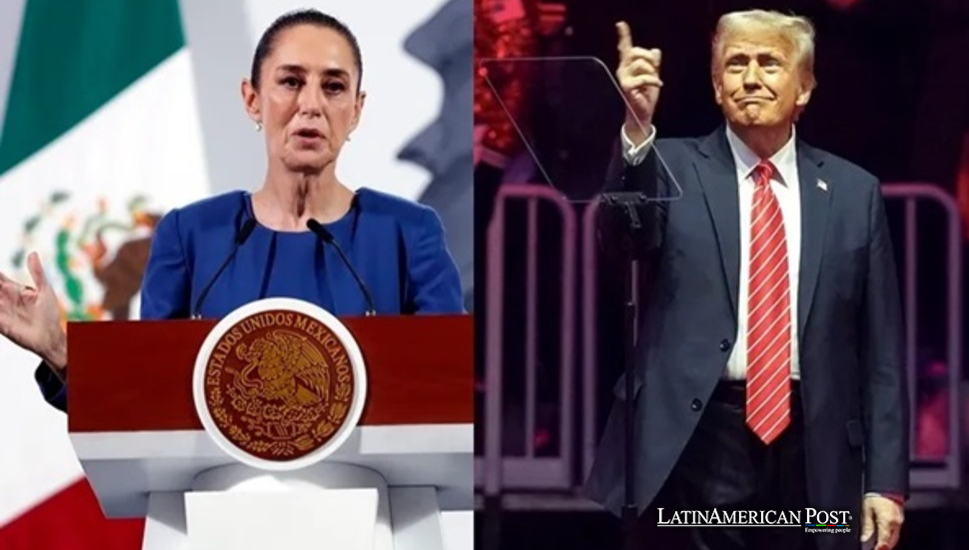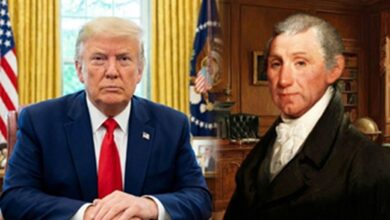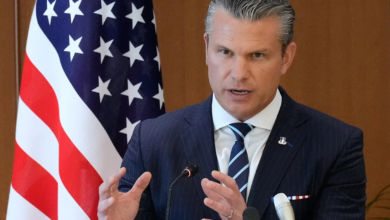Why Trump's Mexico Plan May Be Working

Could a strict stance on tariffs, border control, and joint actions revive Mexico’s fight against drugs? Once dismissed as provocative, President Trump’s plan might push change in Mexico’s policy, as recent significant meth seizures mark clear progress.
Mounting Pressure and the Methamphetamine Problem
The Trump presidency was marked by dramatic announcements and abrupt policy threats, many of which focused on Mexico. One of the most contentious moves involved imposing tariffs on goods from Canada and Mexico—supposedly to force cooperation on issues such as illegal immigration, drug trafficking, and especially the flow of synthetic opioids like fentanyl into the United States. Although the tariffs elicited considerable criticism from economists and foreign policy experts alike, they did place Mexico in a bind: cooperate more aggressively on border issues or face severe economic consequences.
On February 6, President Donald Trump announced he would postpone a 25% tariff on products from Canada and Mexico for one month, citing an agreement with both countries. The deal was based on stronger border controls plus a promise to cut the illegal drug trade, especially fentanyl. This agreement looked like another case in which Trump used economic power to force action on key security issues. Many observers dismissed his tactics as overreaching or grandstanding—yet just days later, Mexican authorities carried out one of the largest methamphetamine seizures in recent memory.
In Sinaloa, Mexican security forces just captured a massive quantity of methamphetamine—4,700 liters of liquid meth plus 269 kilograms in solid form. The operation involved an unprecedented level of coordination between federal and state agencies, from the Secretariat of National Defense (Sedena) and the Navy (Semar) to the National Guard (GN) and local authorities in Sinaloa. The result was a significant blow to criminal organizations in a region historically known as the stronghold of the Sinaloa Cartel.
Could these events be related to Washington’s pressure? If so, they may reveal how Trump’s border and tariff threats, plus later talks, may cause real changes in Mexico’s drug policy. Critics often point out the problems and unexpected results of those tactics. However, major drug seizures become more frequent. In that case, it will be difficult to dismiss the possibility that the United States’ tough stance is partly fueling new momentum in Mexico’s anti-drug campaigns.
Renewed Cooperation or Pure Coincidence?
Skeptics often argue that Mexican authorities regularly conduct these kinds of raids independent of U.S. pressure, especially in areas like Sinaloa. It’s true that Mexico has battled drug cartels for decades, often with mixed results. The new seizure stands out because of its sheer size—4.9 metric tons of meth, which equates to roughly 4.9 million individual doses worth up to 71 million U.S. dollars. For the government of President Claudia Sheinbaum, who assumed office on October 1, 2024, this marks the largest such seizure so far.
For the critics, it might be a chance event—a sign that police got lucky. They claim Trump’s tariff threats or calls for tougher border control do not shape Mexico’s drug enforcement; they cite long-term internal issues: better information, better training, and a steady security plan led by Mexico’s National Guard.
One cannot ignore the broader picture. The fact that a 25 % tariff was delayed just days before the significant bust raises suspicion. The magnitude of the raid, which involved a diverse set of agencies acting in unison, is also substantial. Cooperation on that scale hints at external pressure: with the U.S. demanding results, Mexican agencies might have galvanized around a single goal—showing that they can indeed tackle the meth crisis in a profound, public way.
The press release mentions a “National Security Strategy” that fights organized crime. It includes more decisive steps to check synthetic drug production. Historically seizing meth labs has remained a long-term problem in states like Sinaloa, where drug gangs have mastered the large-scale production of drugs. That many separate agencies collaborated simultaneously suggests either a long-planned operation or a heightened sense of urgency—perhaps both. And given Trump’s emphasis on controlling synthetic drug flows across the southern border, linking these developments to the White House’s strategy isn’t far-fetched.
A Potential Ripple Effect Across the Region
If Mexico’s massive meth bust reflects an early sign of success for Trump’s pressure-based strategy, the implications reach beyond Sinaloa or the immediate U.S.-Mexico border. Other states in northwest Mexico, such as Sonora, Baja California, and Chihuahua, have also been key areas for clandestine drug labs. Meanwhile, cartels have begun exploring new routes and alliances in southern regions, including Michoacán, Guerrero, or even crossing over into Central America.
Should Mexican officials continue to intensify these crackdowns, the ripple effect could mean:
Disruption of Cartel Operations: By targeting the production phase—where meth is manufactured—law enforcement can deal a more potent blow to cartels, who rely on these operations for massive income. While smaller busts have occurred for years, large-scale seizures that hamper production could weaken the chains that stretch far into the United States.
Spillover into Other Synthetic Drugs: Fentanyl remains a leading concern for U.S. authorities. If Trump’s approach and Mexico’s subsequent response lead to systematic improvements—enhanced intelligence, better interagency collaboration, or new training protocols—cartels might face heightened risk across their entire synthetic portfolio, from meth to fentanyl.
A Shift in Smuggling Tactics: Cartels adapt quickly. If direct manufacturing in Sinaloa becomes riskier, they may move production sites or attempt to rely on smaller labs that are harder to detect. This could shift problems into different states or countries, spurring regional coordination.
Ongoing Diplomatic Negotiations: A single success may not define the overarching success of Trump’s method. However, a steady accumulation of such wins could improve trust between the U.S. and Mexico on security matters, potentially opening pathways for more joint operations and intelligence sharing.
Critics will note that each scenario has pitfalls—cartels are notoriously resilient, and one significant seizure doesn’t necessarily signal a lasting trend. Nonetheless, each victorious operation, especially on this scale, can nudge the equation in the government’s favor by pushing trafficking groups to expend resources on relocation, reorganization, and reevaluation of routes.
Reevaluating “Tough Talk” and Long-Term Solutions
One bust in Sinaloa cannot serve as a definitive gauge of success. However, it raises questions about whether Trump’s “tough talk” approach, often dismissed as purely rhetorical, might be having concrete policy impacts in Mexico. Trump’s critics have long maintained that his style—threatening tariffs, delivering fiery speeches on immigration, demanding results—would damage diplomatic relations. Indeed, friction at higher diplomatic levels has existed. Yet, from a purely operational perspective, a significant shift appears in how Mexican agencies coordinate their fight against organized crime.
To be sure, Mexico has strong domestic motivations for drug crackdowns that predate Trump, such as rising violence and the desire for political stability. Yet, sometimes, external pressure can expedite or amplify existing objectives. In the face of threatened tariffs, Mexico has shown a willingness to ramp up border patrols, control migrant caravans, and now, apparently, intensify clampdowns on narcotics production. For the Sheinbaum administration, these developments offer a chance to demonstrate their capacity—and political will—to take on entrenched cartels.
Of course, critics of the Trump approach would argue that these moves could fizzle over time if overshadowed by more pressing domestic issues or if the cartels adapt too quickly. Others worry about the human rights implications of militarized crackdowns, especially in rural areas. Mexico’s National Guard has historically faced scrutiny over whether it relies too heavily on blunt force, risking escalation. Still, the mere existence of legitimate concerns does not negate that a dramatic raid—involving local, state, and federal agencies—represents a step forward in controlling a devastating drug that wreaks havoc on both sides of the border.
In the broader sense, if Trump’s strategy indeed spurs sustained cooperation from Mexican counterparts, we could witness a wider transformation in how the U.S. and Mexico tackle cross-border issues, from narcotics to immigration. Ideally, future operations would be grounded in robust intelligence-gathering, respectful policing, and close collaboration between governments—rather than knee-jerk policy decisions. Even with the best intentions, lasting victory over meth and other synthetic drugs necessitates a combination of economic opportunity for at-risk communities, effective policing, targeted rehabilitation programs, and deeper social reforms.
Still, from an opinion standpoint, ignoring the possibility that Trump’s brand of pressure tactics is registering is becoming more authoritarian. As Mexico seizes record amounts of meth, part of the impetus may well come from wanting to avoid a costly tariff war that could impact everything from agricultural exports to car manufacturing. When significant financial consequences loom, leaders tend to act. For critics who once scoffed at Trump’s abrupt trade threats, seeing these developments could prompt a moment of reevaluation—acknowledging that, however unorthodox, such measures might generate the kind of immediate response that conventional diplomacy sometimes struggles to achieve.
Ultimately, the question is whether these enforcement gains are sustainable. If we see repeated high-level busts in multiple Mexican states, it may indicate that a more profound shift is underway. If, however, operations dwindle or the cartels relocate operations to hidden enclaves, any initial victories could be short-lived. Hence, the next few months—and the Sheinbaum administration’s next moves—will be critical in determining if Trump’s strategy has catalyzed a fundamental transformation in Mexico’s anti-drug posture or whether this extraordinary bust remains an isolated display.
Given the magnitude of the seizure in Sinaloa, the headlines reflect something more than routine business as usual. An alignment of political will, public attention, and cross-border demands may have produced one of the largest meth takedowns in recent history. Whether or not you agree with Trump’s style of pressure, the possibility that his approach contributed to such a result should not be casually dismissed. It may well be that for Mexico’s war against meth, the strategy—controversial though it is—is showing tangible, if tentative, signs of working.
Also Read: The Myth of a Unified Latino or Hispanic Vote
In the end, the best outcome is that these efforts last and grow, resulting in fewer drugs crossing borders and a safer environment for Mexican communities. The challenge is whether both nations can keep this pace, shift to the cartel’s changes, and uphold human rights and social stability. And while the debate over tariffs and “Trumpian” diplomacy will likely rage on, one thing is sure: if these massive drug seizures persist, public perception might shift to the notion that “tough talk” wasn’t just hot air after all.





